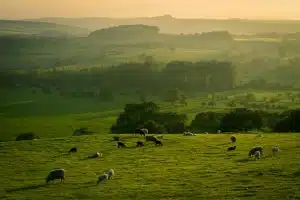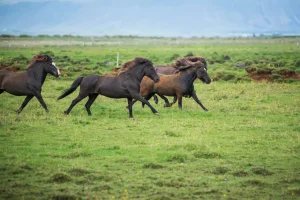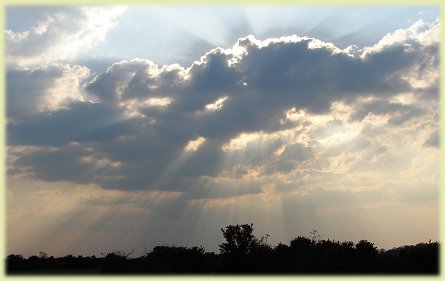New Forest Weather
(& the climate of southern England)
New Forest weather
Overview
Ah, the British weather! How we love it. Or love to talk about it, at least…
In actual fact, for overseas visitors to the New Forest National Park area, the weather isn’t as bad as its reputation would suggest!
It’s true that the United Kingdom as a whole does get more than its fair share of precipitation, but there is a definite line between the north of the country and the south.
Above, a sunray spectacle over Stoney Cross
The country experiences a temperate climate with prevailing south-westerly winds bringing warm, moist air in from over the North Altlantic Gulf Stream. This, generally speaking, prevents the icey-cold winters associated with most countries found on similar latitudes around the northern hemisphere.
But yes, the warm moist winds do bring rain, and the western coast of the United Kingdom takes the brunt. The eastern coast is noticeably drier than the west, but experiences colder temperatures in winter.
Weather around the New Forest
As previously mentioned, there is a definite difference in weather between the north of England and Scotland and the south coast of England.
Southern England enjoys more rain-free days, but this isn’t to be confused with sunny days – official climatic statistics for the south coast show over one-half the number of days in a year to be partly cloudy or overcast.
Temperatures in the New Forest area are rarely extreme, although they can be very changeable even from day to day. A cold winter may see temperatures drop to -5C, and a hot summer will rarely see temperatures exceed +35C.
The coastal position of the New Forest National Park, however, can mean a relatively high level of humidity during the summer months, and this in turn can lead to regular afternoon thunderstorms.
If you’re planning a trip to the area, the biggest issue with the weather is the changeability; you could be in shorts and T-shirt one day, but need full weatherproof gear the next! Do bear this in mind, and pack accordingly!
New Forest forecast
The link below provides current weather information for the town of Southampton, approximately 7 miles east of the New Forest. Clicking the box will take you to a new page with a detailed 5-day forecast for the area, as well as every other piece of atmospheric information that you were too embarrassed to ask about!
When to visit
If planning a trip to the New Forest National Park, the months of April – September are the best.
However, from the second half of July until the first week in September the main summer school holidays are in full swing, and the area can get very busy!
Weatherwise, August can be an unpredictable month in the south of England, with a potential mix of high temperatures and heavy rain, or even prolonged wet spells and lower temperatures. In May and September, temperatures are usually comfortable and the weather fairly settled, and the New Forest can be at its most picturesque during the spring month of May.

Why Time in Nature Complements Daily Astrological Guidance
Many of us start the morning with a quick look at our horoscope. A few lines can help name our mood, highlight a tension, or point out an opening in the day. What often gets

UK’s best natural spots
Wilderness escapes are not for everyone, that’s for sure. Some people simply prefer holidays where they can lounge all day and take it easy instead of being active, going hiking, swimming, or cycling. But there

Tech Hacks for Exploring the New Forest National Park
The New Forest National Park in the UK is one of Britain’s most enchanting natural destinations. Covering ancient woodlands, open heathlands, and winding walking trails, it offers visitors a chance to step back in time

The Benefits of Outdoor Life for Horses
Life outdoors shapes stronger, healthier horses. Sunlight fuels the body with vitamin D, which helps bones grow dense and resilient. Space allows movement that stables cannot match. A horse stretching into stride, breathing clean air,

New Forest Getaway
The New Forest in southern England is unlike anywhere else, one moment you’re on a country lane, the next you’re face to face with a pony blocking traffic. Villages with thatched roofs appear out of

How Satellite Imagery is Transforming Wildlife Conservation
Today, a myriad of species and their habitats are struggling to survive and are on the verge of extinction due to permanent pressure on deforestation, climate change, and unlawful activities like illegal mining and logging.

